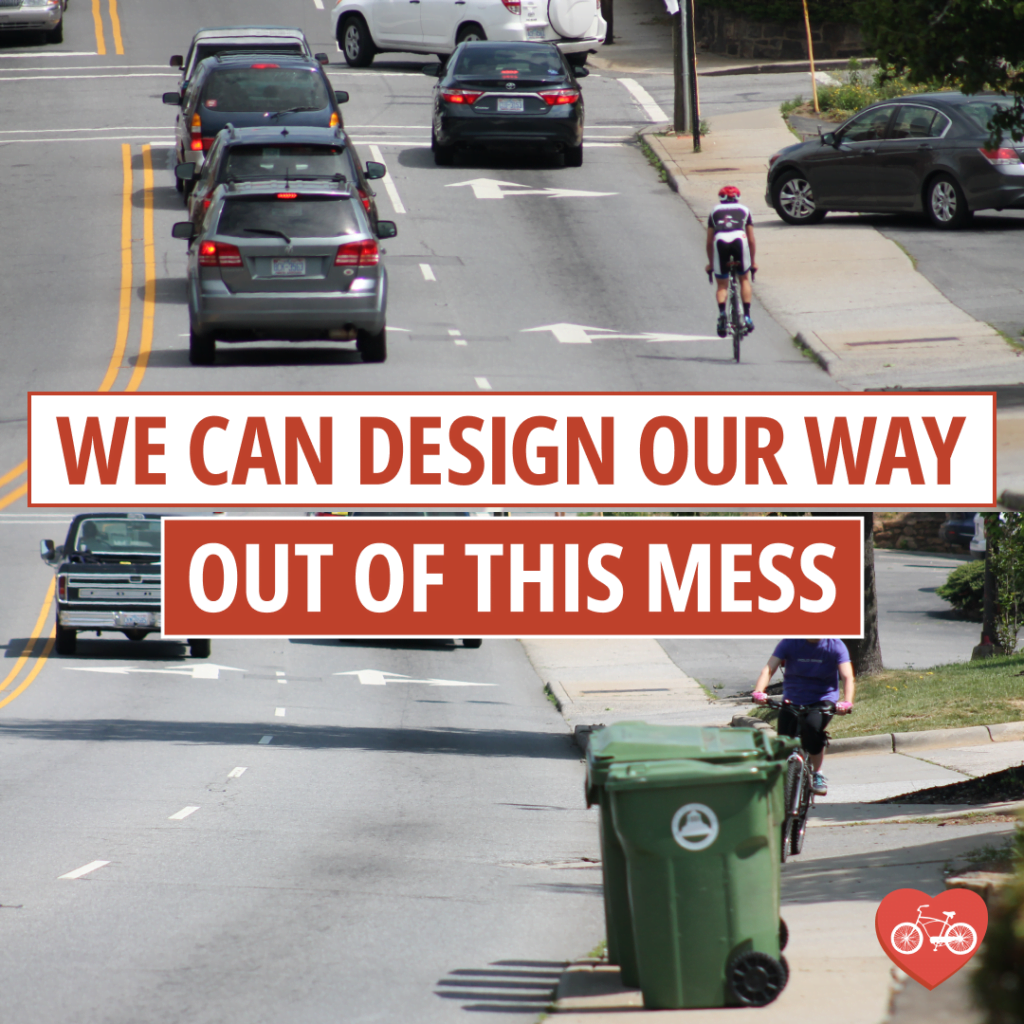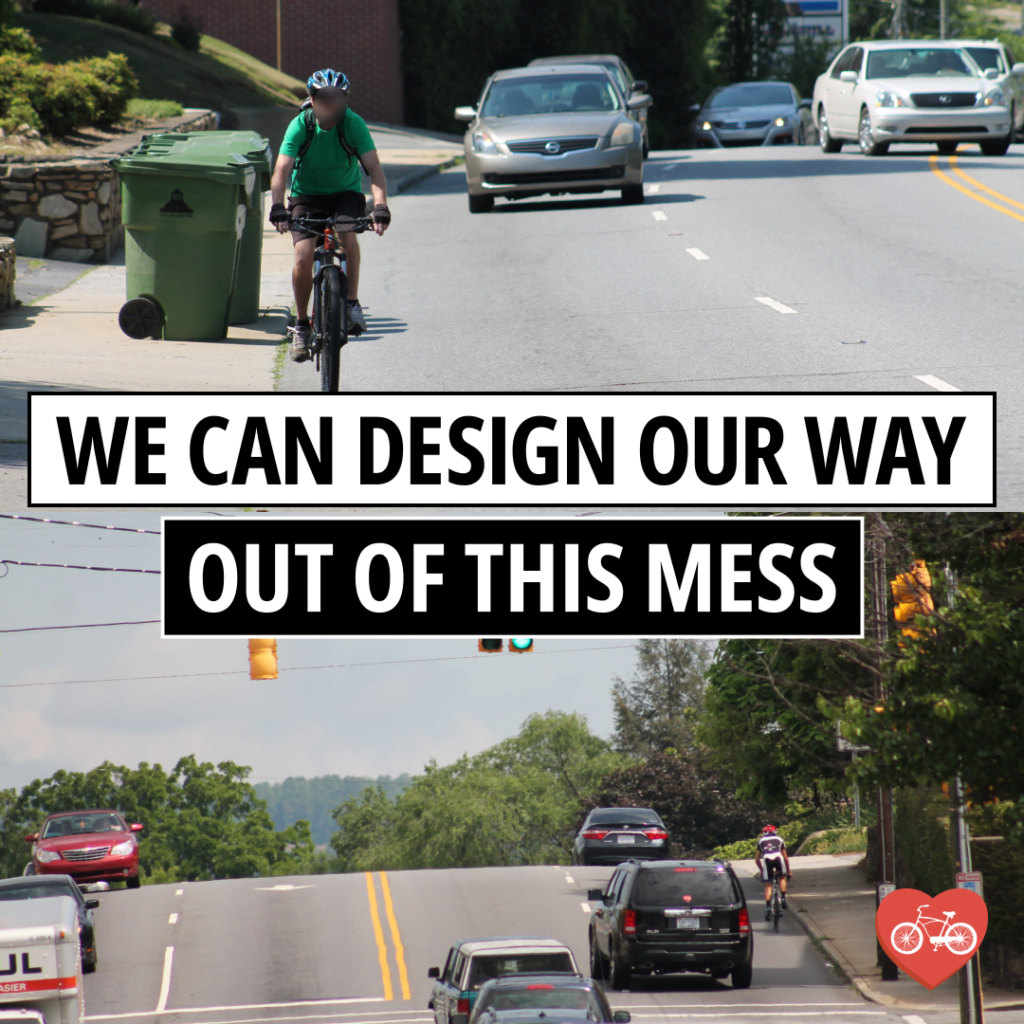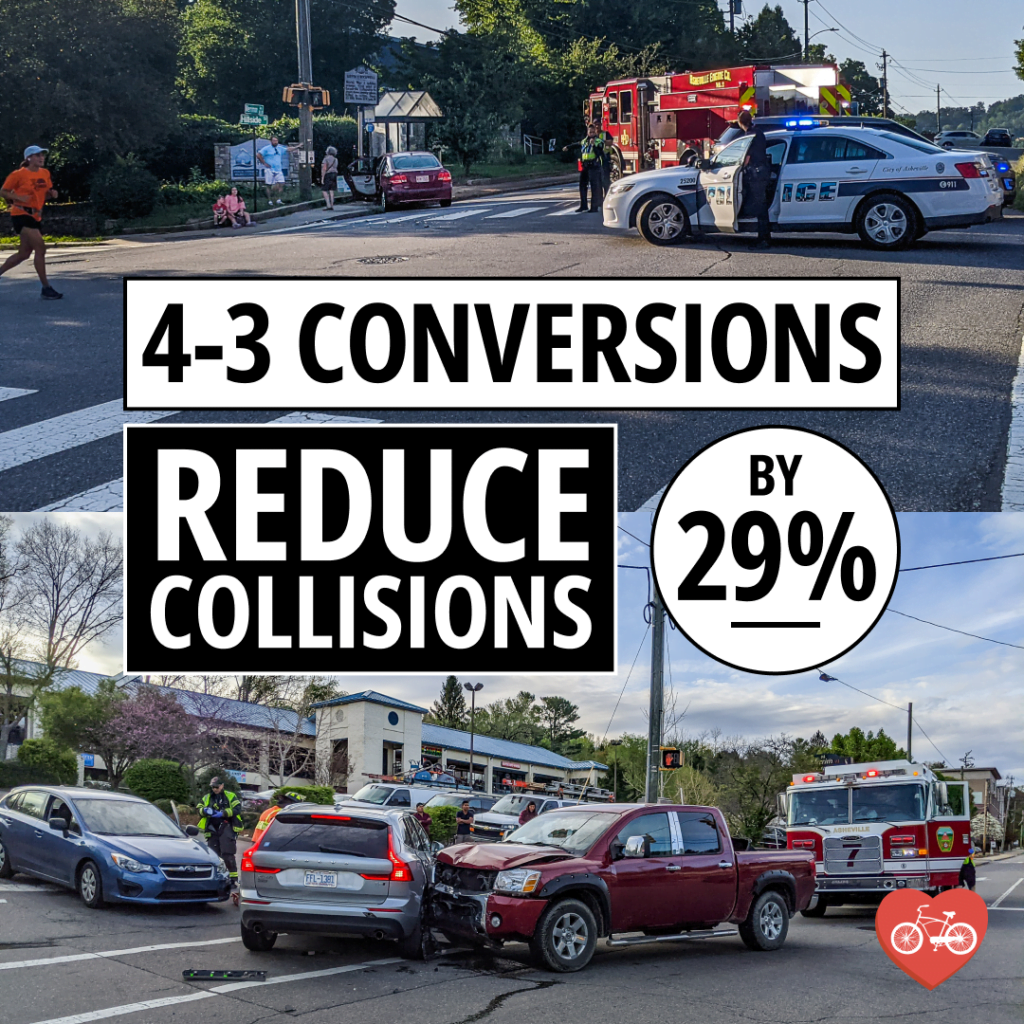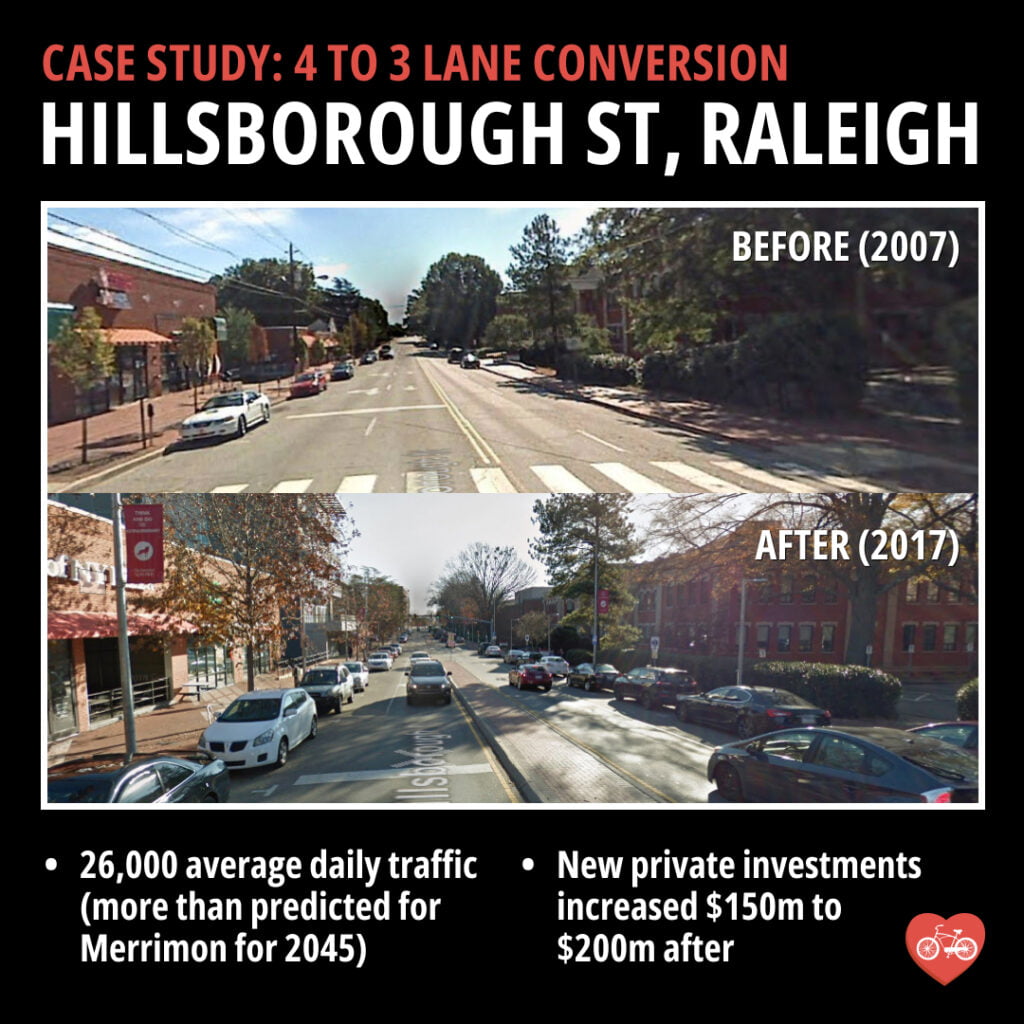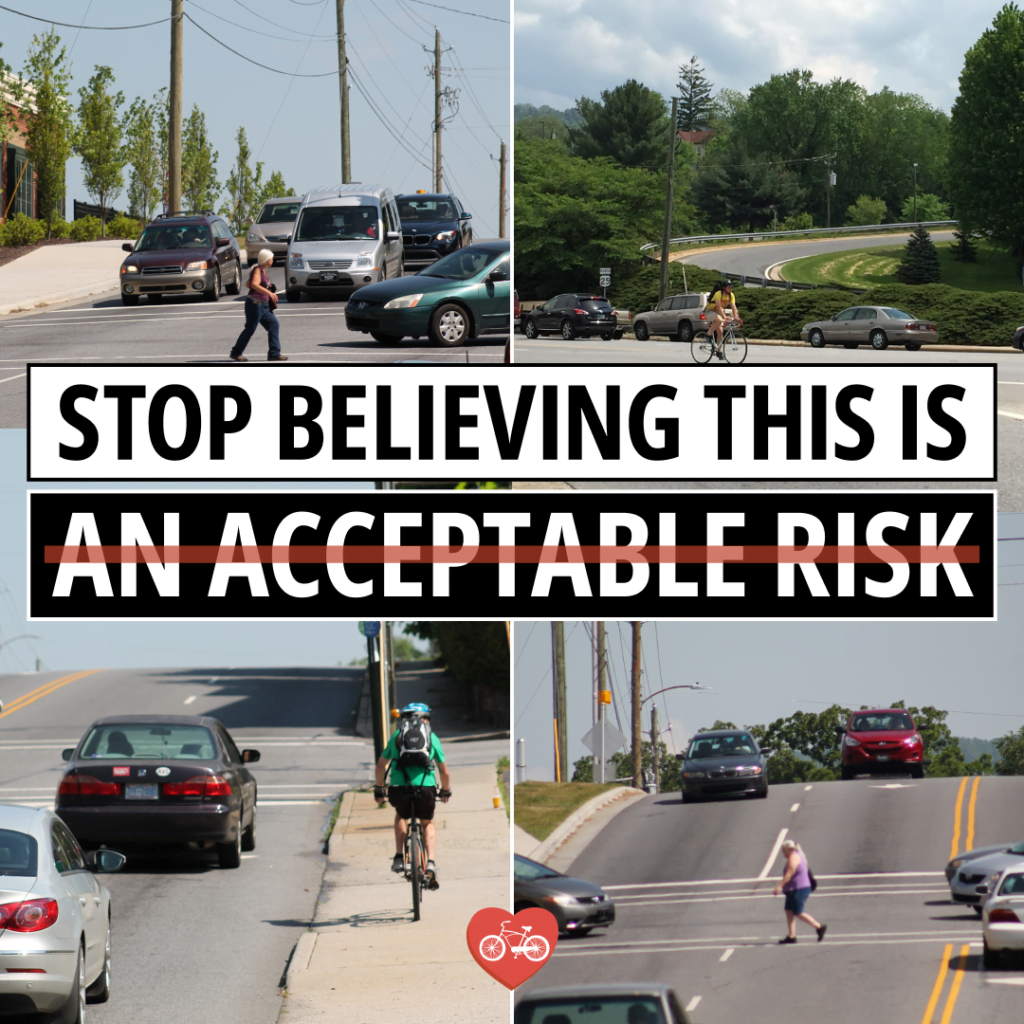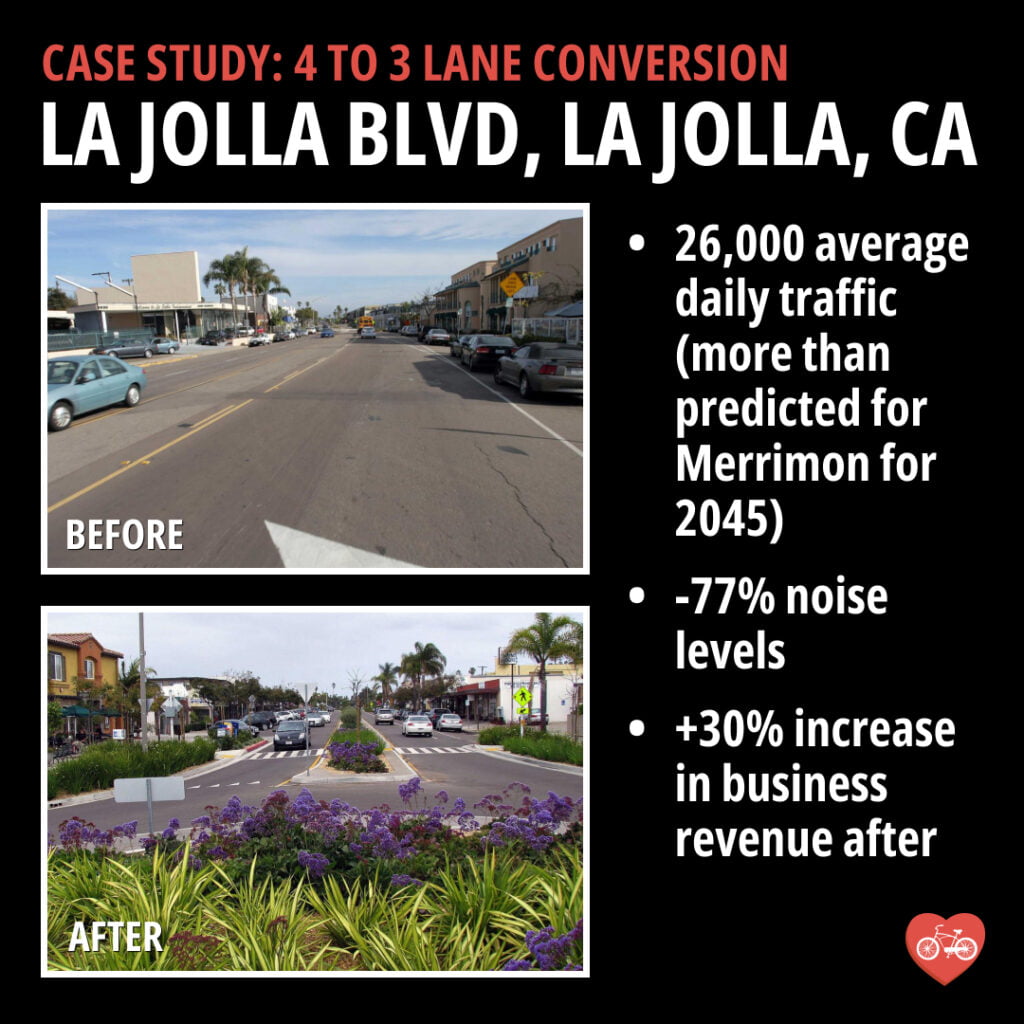Make Merrimon the Main Street of North Asheville!
Asheville on Bikes supports a 4-3 road reconfiguration for Merrimon north of downtown Asheville. Here are some of the articles and explanations of the project. We will keep this page updated as we go!
We commend the City of Asheville and NCDOT for proposing this 4-3 conversion.
Latest News, Updated May 2022:
- Asheville on Bikes submits letter to Council in support of 4-3 conversion with Research Addendum for Council
- City council to vote on Merrimon 4-3 conversion during May 24 council meeting
- Survey results: 59% of more than 4000 responses in favor of 4-3 conversion
Best current resources:
- City of Asheville project page. It includes many useful statistics about Merrimon.
- City of Asheville public survey. The survey itself is on the last tab of the menu on the page, and also at the end of page if you scroll to the bottom. Our own guidance is matched to the questions of the survey.
- The City of Asheville public survey results were published in early May, 2022, and 59% of survey responses were in favor of the 4-3 conversion.
- AoB’s study of this proposal for a 4-3 conversion on Merrimon (pdf, 33 pages). In our study we have attempted to answer many common concerns and objections.
- AoB’s public survey response guidance. Here’s our advice for taking the survey.
- City of Asheville: Story map with data overlays for collisions, bike, ped, traffic volumes and more.
- Merrimon is more dangerous than you may realize. From March 2016 to February 2021, we know of 842 total crashes (14 per month), and we know that 20% of the collisions on Merrimon involve injuries. Thus, 168 crashes with injuries. Here’s an example of what that means (Audio from public comment at Asheville’s Multimodal Transportation Commission). A 3 lane configuration reduces collisions by 29%, the average reduction obtained in a study of a large number of 4-3 conversions.
Other current resources:
- AoB Flyer for Feb 28, 2022 Public Meeting
- NCDOT AECOM Traffic Study with traffic patterns documented. We reference some of these numbers in our own study. The quickest way to check traffic volumes is to use the Story Map.
- Citizen Times opinion “Merrimon Avenue can be designed to benefit its neighbors”
- Citizen Times story about the Merrimon Road Reconfiguration
- Citizen Times story about the Feb 28, 2022 public meeting
- AoB blog post about safety on Merrimon as strong reason to support this project
- Youtube, Discussion and presentation of early Charlotte Street Road Diet results, from the firm that designed that project. Spoiler: It is working well.
- Charlotte Street Road Diet post installation report. -59% collisions, increases in biking and walking, car travel times not significantly affected, average speed reduced, no increase in cut through traffic observed.
- NCDOT plans pedestrian and ADA improvements for the Charlotte Street / I-240 interchange, following the success of the road diet and increases in bike and pedestrian use in the area.
Results of public survey revealed as City of Asheville sends project to council
- 59% of the 4,038 responses were in favor of the 4-3 conversion. This is a historic result and represents both a large public response and a majority of respondents in favor of a change in traffic pattern.
Why a 4-3 conversion is a good idea for Merrimon:
- Because Merrimon is already in a 3 lane traffic pattern. Each car in the center lanes of the 4 lane road, waiting to turn left, blocks traffic flow. In essence, Merrimon is a two lane road with two center turn lanes. This wasteful design results in turbulent traffic patterns, increased collisions, and a lack of space for other multimodal uses. It also means that the approximately 20,000 cars/day the road sees now are going to flow just fine if the lane pattern changes to to 3 lanes – because that’s how many functional lanes the road has now. FHWA calls this a “de facto 3 lane configuration”, in section 3.3.1.
- Because a 3 lane reduces points of conflict between cars from 8 possible collisions to just 4, reducing collisions from all causes by about 29%. The current 4 lane pattern is resulting in an average of 14 collisions per month, 20% of those with injuries. It’s unconscionable to us to put back the road the way it is now.
- Because safer, slower streets with predictable traffic are good for business and for the health of people who frequent the street. A calmer Merrimon will benefit the surrounding property owners and help businesses thrive.
- Because Merrimon traffic volumes are within the range where road diets are appropriate. And looking back over the last 20 years, the traffic volumes have remained in a similar range, hovering around 20,000 cars per day.
- Because widening the road would induce demand for driving and destroy a large amount of private property, without providing offsetting benefits like improved walk-ability, bike lanes, and a pleasant main street environment built to a human scale. In 2018, a road widening plan for the north end of Merrimon was defeated with 80% of public comments against it. Here’s the logic: Widening to 5 or more is wasteful, expensive, and destructive; the current 4 lane is very dangerous, makes walking and biking unsafe, and holds back “main street” economic development; and a 3 lane traffic pattern offers known solutions for those same problems. The 3 lane design is the best option for improving life in north Asheville.
Case studies:
- Economic benefits of “Rightsizing our Streets”. 12 Case Studies referenced.
- Large collection of case studies from the FHWA. 23 Case Studies explained.
- Hillsborough Street case study from Raleigh, NC (Average Daily traffic 26,000)
- East Boulevard case study from Charlotte, NC (Average Daily traffic 21,400)
- La Jolla Boulevard case study from La Jolla, CA (Average Daily traffic 23,000)
- Edgewater Drive in Orlando, FL (link to pdf of 10 year study. Average Daily traffic 20,500)
Past resources:
- 2018, AoB opposed a road widening project on Merrimon. It was defeated by public opposition in 2018 and removed from the regional Transportation Improvement Plan (TIP) in 2020, ending it for good.
- 2018, AoB published a searchable collection of past public comments about Merrimon, in which many people ask for change. We published this collection to illustrate how important it is for our streets to be designed as complete streets, with multimodal options, as opposed to a car-first or car-only pattern of design. Get the pdf version of the 2018 comments.
- 2015, Protests in the wake of the death of Yvonne “Patsy” Lewis. Before these events in 2015, nearby neighbors were ignored when they requested a safe way to cross Merrimon. Patsy was killed trying to cross the street at Coleman, ultimately resulting in NCDOT allocating funds to put in a marked crosswalk and traffic signal at the intersection. The fundamental problem remains, however: if Merrimon stays in the 4 lane configuration it would be continuing a design which creates unnecessary risk for people who use the road, whether on foot, on a bike, or in a vehicle. This has been sadly proven in several more recent collisions. Here’s a description of one from someone who suffered serious injuries when she was hit by a car while walking with the walk signal at the Chestnut intersection in 2020.
Related posts:
- AoB: Merrimon Avenue: Road Diet proposed!
- AoB: Resource page tracking this project on our site.
- City of Asheville: Project page for this project
- City of Asheville: Story map with data overlays for collisions, bike, ped, traffic volumes and more
- Iowa DOT: Good road diet explainer video, 6 minutes
- FHWA: Road diet case studies
- FHWA: Road diet myths
Youtube channels we like, about more than just 4-3 conversions:
FHWA Video. “Road Diets, A Proven Safety Countermeasure”
Social Media graphics you can share:
